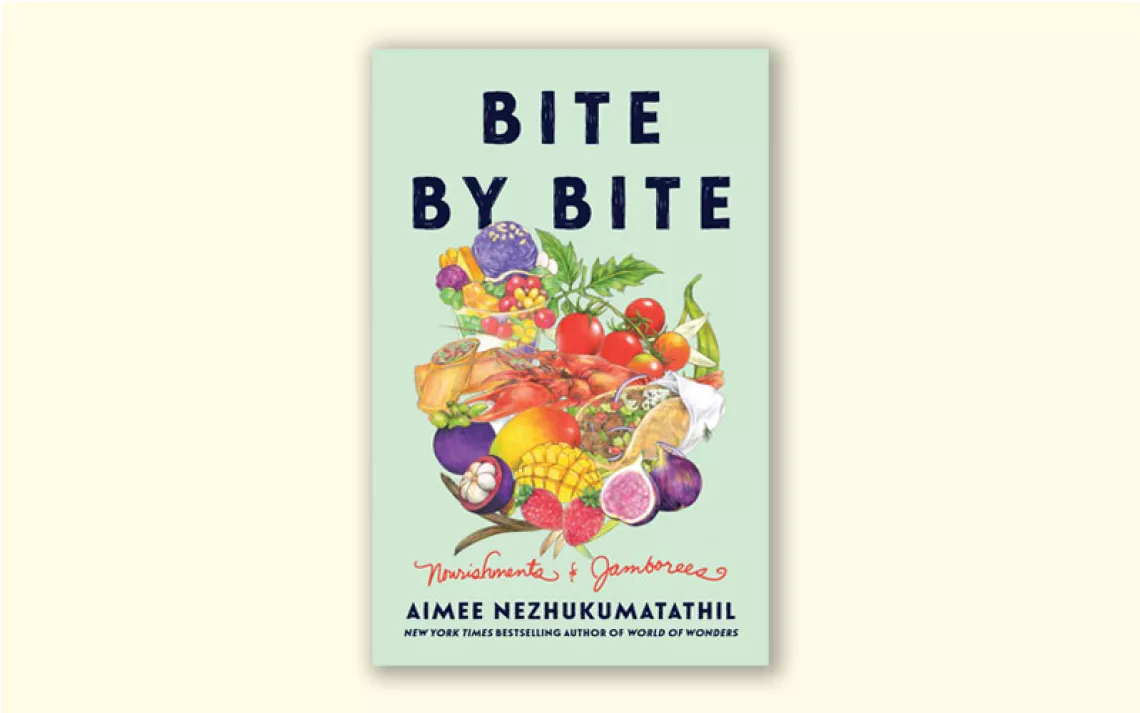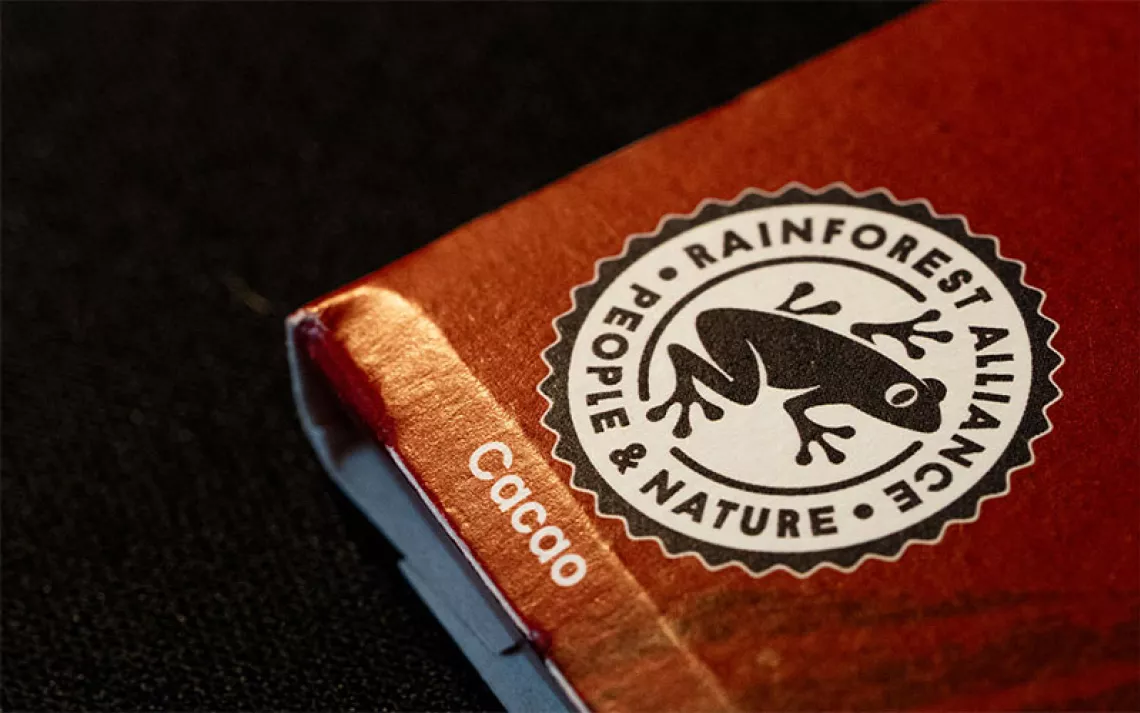3 Easy Vegan Pies for the Holidays

With multiple vegan dessert books under her belt, including Easy as Vegan Pie: One-of-a-Kind Sweet and Savory Slices (Skyhorse, 2013), which includes over 100 recipes, it is pretty safe to say that Hannah Kaminsky knows a thing or two about pies. So with the holiday season on our heels, we asked Kaminsky to share some of her favorite recipes for vegan pie creations. She even threw in a simple crust recipe, which we put at the bottom of this post. Pretty sweet...
Cran-Cherry Impossible Pie
1 Classic Crust (See recipe at bottom of post)
1 1/2 Cups Cranberries, Fresh or Frozen and Thawed
1 1/2 Cups Pitted Sweet Cherries, Fresh or Frozen, Thawed, and Drained
1/2 Cup Slivered Toasted Almonds
3/4 Cup Plain Non-Dairy Milk
1 Teaspoon Almond Extract
3 Tablespoons Non-Dairy Margarine or Coconut Oil, Melted
1/4 Cup Cornstarch
1 Cup Granulated Sugar
1/2 Cup All-Purpose Flour
1/2 Teaspoon Baking Powder
1/4 Teaspoon Salt
Preheat your oven to 350 degrees, and lightly grease and flour a 9-inch pie pan. Toss the cranberries, cherries, and slivered almonds together, and evenly distribute the mixture in your prepared pie pan. Set aside.
In a large bowl, whisk together the non-dairy milk, almond extract, melted margarine or coconut oil, cornstarch, sugar, flour, baking powder, and salt, until smooth. Pour the batter over the fruits and nuts in the pie pan. Don't worry if it looks like a mess at first, the cranberries will float to the top.
Bake for 50–60 minutes until a toothpick inserted into the center (of the batter only, not touching the fruits) comes out clean. Let cool for at least 1 hour before serving.
Makes 8–10 Servings.
Pear Praline PiePear Praline Pie
1 Classic Crust (See recipe at bottom of post)
Spiced Pears:
3 Pounds (About 6 Cups; 5 Medium) Firm D'anjou or Bosc Pears, Peeled and Sliced
1/2 Cup Granulated Sugar
1/4 Cup Cornstarch
2 Tablespoons Arrowroot
1/2 Teaspoon Salt
3/4 Teaspoon Ground Cinnamon
1/4 Teaspoon Ground Nutmeg
1/8 Teaspoon Ground Cardamom
Zest of 1/2 Lemon
Pecan Praline Topping:
1/2 Cup Dark Brown Sugar, Firmly Packed
1/2 Cup All-Purpose Flour
1/2 Cup Chopped Raw Pecans
1/4 Teaspoon Salt
1/4 Cup Non-Dairy Margarine, Melted
Preheat your oven to 400 degrees.
Place your sliced pears in a large bowl along with the sugar, cornstarch, salt, and spice. Toss gently to evenly distribute the dry goods and coat the fruits. Add the lemon zest last, and stir briefly to incorporate. Transfer the spiced pears to your pastry-lined pie pan and arrange the pear pieces in as even a layer as possible, packing them into the bottom tightly.
The praline topping is made just like your average streusel; combine the brown sugar, flour, pecans, and salt in a medium bowl, mixing lightly. Drizzle the melted margarine in on top and stir until the mixture is fully moistened and sticking together in coarse clumps. Sprinkle it all over the top of the pie. It may seem like a lot, but there really is room for all of it, and later you'll be happy you loaded it up!
Slide the pie into the oven and bake for 10 minutes. Without opening the oven, turn down the heat to 375 degrees and continue baking for 30 minutes more. If the edges of the crust appear to be browning too quickly, cover them with strips of aluminum foil halfway through the baking process. When finished, the fruit should be bubbly and the crust golden.
Let cool for at least 20 minutes before enjoying.
Makes 8–12 Servings.
Pomegranate-Pecan PiePomegranate Pecan Pie
1 Classic Crust (See recipe at bottom of post)
1/3 Cup Cornstarch
1 Cup Plain Non-Dairy Milk
1/2 Cup Pomegranate Molasses
1/2 Cup Amber Agave Nectar
1/2 Teaspoon Salt
6 Tablespoons Non-Dairy Margarine, Cut into Pieces
1 Teaspoon Vanilla Extract
1 1/2 Cups Toasted Pecan Halves
To Finish:
1/3 Cup Fresh Pomegranate Arils
In a medium saucepan, vigorously whisk together the cornstarch and about half of the non-dairy milk, forming a loose slurry. Be sure to beat out any lumps of starch, especially those that might be sticking to the bottoms or sides of the pan, before stirring in the remainder of the "milk." Add the pomegranate molasses, agave, and salt to the pan before setting it over medium heat on the stove.
Continue stirring gently the whole time the heat is on, and soon enough you should see bubbles begin to break around the edges of the liquid. Start whisking a bit faster, until the mixture reaches a full boil. Immediately turn off the stove and whisk in the margarine and vanilla, allowing the residual heat to melt the margarine. Finally, add the pecans.
Quickly transfer the filling into your baked and cooled crust, using a spatula to further distribute the nuts if they seem to have all landed in one spot. Sprinkle the pomegranate arils evenly across the top of the filling, and gently press them in with your fingers.
Let cool completely, waiting at least a full hour and a half, before serving.
Makes 10–12 servings.
"Old Reliable" The Classic Crust
Two Crusts (For a Double-Crust):
2 1/2 Cups All-Purpose Flour
2 Teaspoons Granulated Sugar
1/2 Teaspoon Salt
3/4 Cup Non-Dairy Margarine, Chilled, Cut into Small Pieces
1 Tablespoon Lemon Juice
2–4 Tablespoons Ice-Cold Water
OR
Single Crust:
1 1/4 Cups All-Purpose Flour
1 Teaspoon Granulated Sugar
1/4 Teaspoon Salt
6 Tablespoons Non-Dairy Margarine, Chilled, Cut into Small Pieces
1 1/2 Teaspoons Lemon Juice
1–2 Tablespoons Ice-Cold Water
The easiest, quickest way to make a traditional pie crust is to get a helping hand from your food processor. Some say this approach sacrifices flakiness in favor of convenience, but I don't believe that any of my pies have suffered as a result. If you have the equipment, my advice is to use it! Place the flour, sugar, and salt in the bowl of your food processor and pulse to combine. Add the margarine and pulse 6–8 times, until the mixture resembles very coarsely ground almond meal. A few small chunks of margarine should remain visible, but nothing larger than the size of peas. Sprinkle lemon juice and the first tablespoon of water in while pulsing a few times to incorporate. If the dough holds together when squeezed, you're good to go. If it remains crumbly, keep adding water while pulsing, just a teaspoon at a time, until the dough is cohesive.
In case you don't have a food processor or just don't want to clean the darn thing afterward, the old-fashioned method is just as effective, if a bit more labor-intensive. Place the flour, sugar, and salt in a large bowl and use a pastry cutter or two forks to cut in the pieces of margarine. A few small chunks of margarine should remain visible, but nothing larger than the size of peas. Sprinkle lemon juice and one tablespoon of water into the bowl and stir well with a wide spatula. Sometimes it can be difficult to get the liquids properly incorporated, so it may be helpful to drop the formalities and just get in there to mix with your hands. If the dough holds together when squeezed, you're set. If it remains crumbly, keep adding water and mixing thoroughly, just a teaspoon at a time, until the dough is cohesive. Do your best not to over-mix or over-handle the dough, as this will make it tough when baked.
If making a double crust, divide the dough into two equal portions. Regardless of how many portions you now have, shape them into rough rounds and flatten them into disks about 1/2 inch in thickness. Wrap each tightly with plastic wrap and stash them in the fridge. Let chill for at least an hour, or up to a week. To save the unbaked dough even longer, store the pieces in your freezer for up to 6 months. (Don't forget to label them clearly!)
When you're ready to roll, lightly dust a clean, flat surface with an even coating of flour. Work on one disk of dough at a time, and coat both sides lightly with additional flour. Starting at the center of the disk, use your rolling pin to apply light pressure while rolling outwards to the edges. Try to maintain the round shape as best you can, turning the dough as needed. It may be helpful to periodically lift the dough to ensure that it's not adhering to the counter. Keep rolling until the dough extends at least 2 inches beyond the size of your pie pan all around.
Carefully transfer the dough to your desired pie pan, and crimp the edges or decorate to your heart's content. See page 24 for ideas. At the very least, trim away the excess dough so that only 1/2 inch is overhanging the lip of the pan. Tuck the extra dough underneath itself along the edge so that it's smooth.
For an unbaked crust, you're done here! Let the crust rest in the fridge while you prepare the filling. To blind-bake, see page 24 for the procedure.
If you're making pie with a top crust, roll out the second disk of dough in the same fashion as before, reapplying flour to the counter if need. Use cookie cutters to cut out decorative vents before moving the dough, or simply cut six vents with a sharp knife. Gently place the flattened dough onto the filled pie, centering it as best you can. Use kitchen shears or a sharp knife to trim the overhang to an inch. Tuck the excess from the top crust under the edge of the bottom piece of dough, pressing together firmly but gently to seal. Bake according to the recipe for the filling.
Makes 1 or 2 Crusts
 The Magazine of The Sierra Club
The Magazine of The Sierra Club



